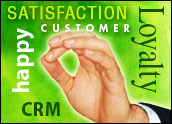There’s an oft-heard slight in professional realms: “Those who can’t do, teach.” If taken seriously, this notion would leave marketers lost in their attempts to build consumer loyalty.

Loyalty-building efforts are far-reaching and far-roaming, having scaled a precipice of marketing interest in the late 1990s and answered to a well educated and often amply rewarded — but still hungry — customer base. Those who thought initiatives needed little more than a points scheme and a plastic card to increase consumer activity and generate “loyalty” failed to do the following:
- Deliver rewards that consumers want in a format they understand or appreciate.
- Invest in the customer relationships they have initiated.
- Stick to a budget when fulfilling the promises of their loyalty programs.
- Generate incremental purchases from existing consumers.
- Segment buyers according to their long-term value and profitability.
Such a checklist might explain why ex-consultant Peter Palmer taught his way through the industry to become CEO of Intelligent Golf Marketing, the Toronto-based sponsor of the Skins loyalty program. Over the years, he has honed a checklist in order to successfully build consumer loyalty.
It includes practical purchase frequency — for example, a consumer may need to buy toothpaste every six weeks but only need a new mattress every five to 10 years. Although loyalty is equally important to both the bedding marketer and the pharmacist, a standard points-for-purchase plan will not work equally well across retail types.
In fact, much of the philosophy Palmer developed to win customer loyalty depends on common sense components. For example, he demands an assessment of a brand’s value to its customers. “This is where most companies miss the boat,” he said. “They don’t give enough value to satisfy their customers.”
Keep It Simple
According to research by Auriemma Consulting Group of Westbury, N.Y., Chase is the most popular rewards sponsor among U.S. consumers. Although consumer interest in rewards is well distributed across programs from petroleum retailers, airlines, retailers and even auto manufacturers, Chase’s credit cards claim 15 percent of the market.
In mid-September 2006, Wilmington, Del.-based Chase Card Services rolled out a rewards program that was in the works for more than a year. “It is the most researched product Chase has ever done,” said Stacy Hamilton, the firm’s senior vice president of marketing. In addition, it reflects Chase cardholders’ and prospective customers’ desires for greater control and flexibility over rewards programs.
The product allows cardholders to choose cash-back benefits — accumulated at a 1 percent funding rate for most purchases and a 3 percent funding rate for transactions at gas retailers, grocers and quick-service restaurants — or points. The disbursements mirror the cash-back rates, with one point per dollar spent at most merchants and three points per dollar spent in the select categories.
In redeeming the points, cardholders may travel on any airline or swap them out for British Airways Miles, Continental OnePass miles or United Mileage Plus miles.
Greater control and flexibility comes in when, once a month, consumers may change their benefits from cash back to points or vice versa. There is no penalty for switching back and forth.
“Part of the reason Chase ranks so highly [with consumers] is because we have a variety of different products that meet different consumer needs,” Don Schmitt, senior vice president of product development at Chase, told CRM Buyer. In addition, co-brands and affinity cards — such as the Starbucks Duetto Visa and the Cigar Platinum Visa, respectively — cover niche interests and needs.
Mind the Relationships
As offerings have become more targeted, Palmer reminds loyalty seekers that their efforts truly ground their customer relationships. Rewards programs take on lives of their own, he said.
Customer relationships inspired by loyalty initiatives must be continually nurtured and fed lest the aim of building loyalty be lost. “Refresh — update rewards. Supplement them with promotions and communications,” Palmer urged.
“Be as unique as possible, supported by a variety of rewards,” offered Bob Taglin, managing associate at Auriemma Consulting Group. “The ante is up now. Give consumers flexibility.”
The trend that allows consumers to choose their own rewards is not only evidenced by Chase Freedom’s push into the mass market, according to Taglin. The extension of control to consumers reaches an entirely different level when firms target their brands toward the super-affluent.
A growing number of firms offer experiential rewards, such as balloon rides or exotic vacations, in order to engender loyalty. Increasingly, consumers can craft their own adventures or purchases using points-friendly banks and cozy couplings with their favorite brands.
Marketers have realized that building loyalty is more than building frequency or even the sometimes fuzzy measure of customer satisfaction. They have reached out, looking to secure relationships for life to increase profitability.





























































